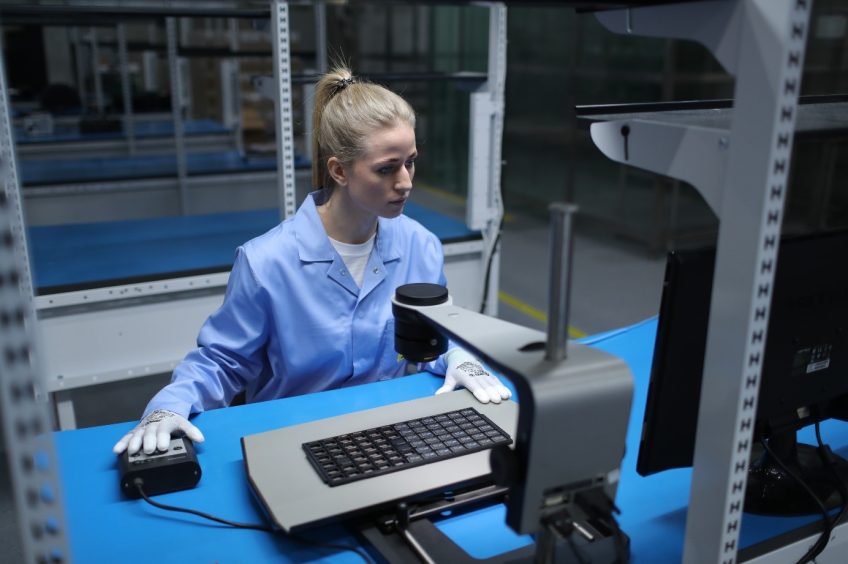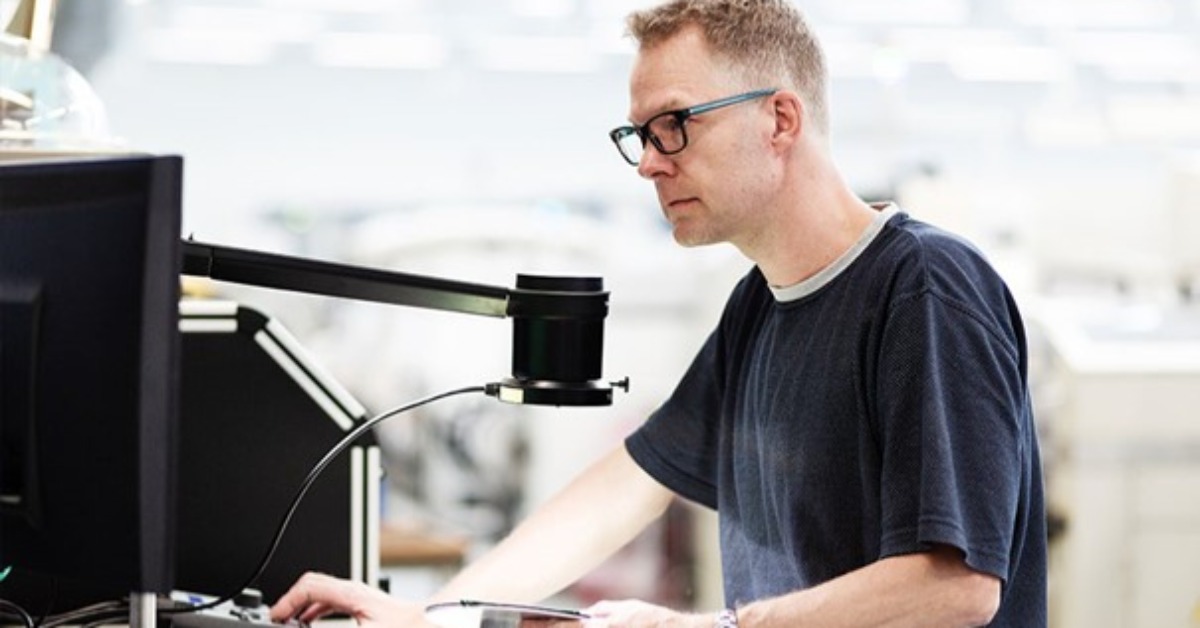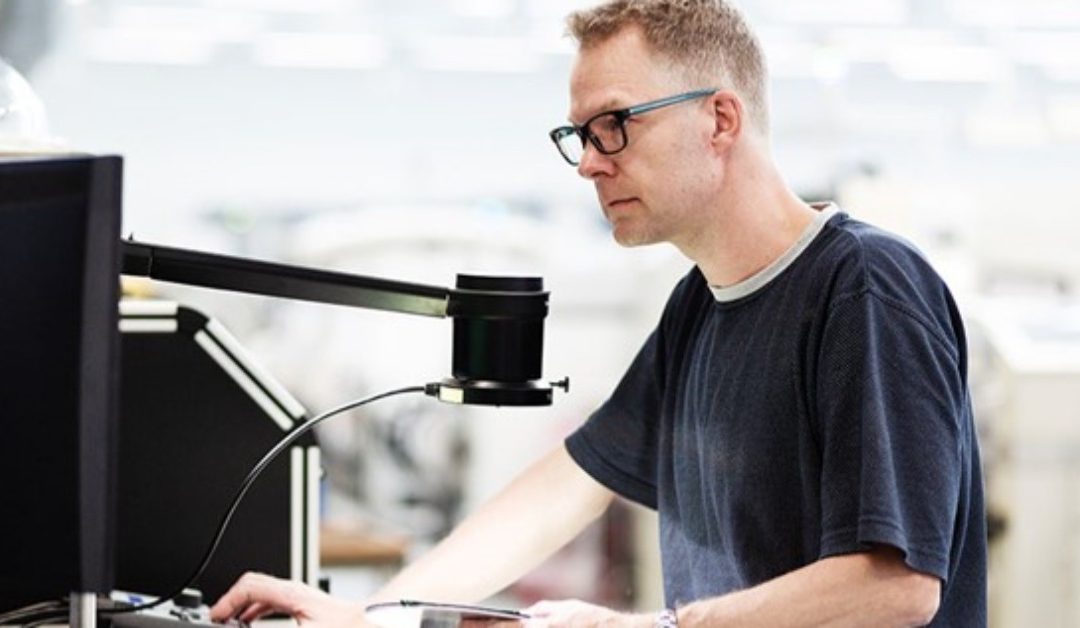It’s hard to imagine today’s world without microscopes, especially in the electronics industry. As technology has evolved, complex components have become so small that it’s challenging to even see them without a microscope, let alone work with them. Whether it’s for soldering or finding damaged electronic components, a microscope is essential for these tasks. So how do you choose the best microscope for electronics repair?

Working in electronics, especially with miniature components, engineers and technicians often face challenges related to precisely viewing and manipulating tiny elements. In response to these challenges, the industry has introduced two main types of microscopes: stereoscopic and digital. Both of these categories are designed to meet the specific needs of users and provide them with the best working conditions.
Stereoscopic Microscopes
Stereoscopic microscopes, also known as binocular microscopes, are unique due to their ability to provide a three-dimensional image. This allows the user to easily recognize structures and details on printed circuit boards. They enable precise inspection and manipulation of complex and delicate elements, such as SMD or BGA.
Their design relies on using two optical paths directed at different angles to the object being examined. The result is a sense of depth, which is extremely valuable when working with small components. Furthermore, stereoscopic microscopes offer a comfortable working space, allowing ample room between the object and the lens, which is crucial for operations such as soldering or assembly.

The use of stereoscopic microscopes in the electronics industry is broad and diverse, ranging from research and analysis to assembly and repair work. Their indispensable ability to provide three-dimensional viewing makes them one of the most important tools for specialists in this field.

Digital Microscopes
The digital revolution that has transformed many aspects of our lives has also touched the field of microscopy. Digital microscopes, with their versatility and flexibility, are becoming an increasingly popular choice among professionals involved in electronics repair.
One of the most popular and readily available models on the market is the USB microscope. Its small size and simple operation make it an ideal tool for fieldwork. However, like any device, it has its drawbacks. Although it is an economical option and easily accessible on many sales platforms, the image quality, lighting, and working distance leave much to be desired, which can affect the comfort of working on more complex repairs. Another option is a digital microscope with a built-in screen. This solution eliminates the need for additional devices or cables.
Everything you need is in one place. However, the screen size may be a limitation for some users who require a larger display area for precise work.
For those seeking the highest image quality and flexibility in setting up their workstation, the best solution is a digital microscope with the ability to connect to a separate monitor. This solution provides uncompressed, high-quality images, which is crucial when working with small electronic components.
Each type of digital microscope has its advantages and disadvantages. Choosing the right device depends on the user’s individual needs and requirements and the type of work being performed. It’s important to carefully consider all options before making a purchase decision.
What to consider when choosing a digital microscope for electronics repair?
When purchasing a digital microscope for electronics repair, it’s essential to consider several key factors. First, the appropriate magnification is crucial. Many microscopes offer impressive magnification values, but for most electronics applications, magnification up to 50x is sufficient. Although high magnification can be useful for particularly precise tasks, such as examining microscopic SMT elements, it may prove impractical for practical repair tasks. Another important aspect is image smoothness. The ideal microscope should offer a display of 60 frames per second.

This ensures a smooth and up-to-date representation of what is happening under the lens, eliminating delays between tool movement and what is visible on the monitor. Image stability is another crucial element. The microscope should not produce a shaky image due to slight table or surface vibrations. A stable image is essential for precise work, and its absence can lead to errors and frustration.
Image quality is a critical factor that affects work efficiency and comfort. A good microscope should offer an autofocus function, which automatically adjusts the image sharpness. Although manual focus adjustment can be useful in certain situations, a microscope equipped only with this function may not be the best choice.
The last, but not least important factor is lighting. Proper lighting is essential for clear and vivid display of objects under the microscope. Many digital microscopes have built-in lighting. However, it is recommended to choose a model compatible with additional ring lighting, which allows for more precise adjustment of light intensity and direction.
The best digital microscopes for electronics repair
When it comes to digital microscopes designed for electronics repair, certain brands guarantee quality and precision. TAGARNO is one of the leading manufacturers in this market, recognized by industry professionals. This Danish company, known for its innovation and reliability for years, has become an indispensable partner in the electronics industry. Among its range, the TAGARNO ZIP model stands out.
The TAGARNO ZIP features exceptional image quality in 1080p resolution and a speed of 60 frames per second. This ensures a smooth live image even when working with small electronic components, which is crucial for precise repairs. Additionally, this microscope has automatic focus adjustment, significantly facilitating work. The TAGARNO ZIP offers a magnification range from 1.7x to 53x, perfectly suited to the needs of the electronics industry. It also comes with built-in lighting, and compatibility with various ring lights allows for precise adjustment of lighting conditions to the specific task.

Another advantage of the ZIP microscope is its mobility. Its compact size (38.6 cm by 15.5 cm) and lightweight (2.0 kg) make it easy to move between different workstations. The ability to control the microscope with a footswitch further increases user convenience, allowing hands-free operation during work.
Advanced users will also appreciate the ability to take photos directly through the ZIP microscope. Simply connect it to a computer and use the built-in Windows OS Camera application. The TAGARNO ZIP combines high quality and precision with practicality, offering the best features needed for professional electronics repair while providing excellent value for money.
Before purchasing, it is advisable to consult with an experienced advisory partner and test the device in action. RENEX Group, recognized as one of the leading and most competent companies in the electronics sector, provides advisory services for companies looking to develop electronics production and repair in Poland and Central and Eastern Europe. RENEX also offers anti-vibration tables, which are essential when working with microscopes. These tables minimize vibrations that can interfere with precise microscopic analysis, crucial for the quality and effectiveness of electronics repairs. At the RENEX Technology and Training Center, it is possible to practically test the devices in their range, including anti-vibration tables and TAGARNO microscopes. TAGARNO microscopes can also be tested directly at interested clients’ locations. For more information, you can contact RENEX experts at dth@renex.pl or visit the official website www.renex.pl.
